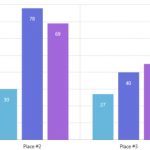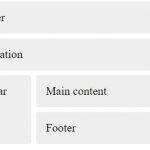The web has been changing rapidly as more people use smartphones and tablets instead of computers as their primary method of accessing information online. Websites can now be accessed from a variety of devices and screen sizes, so it’s important to design for all these different scenarios.
Table of Contents
What is Responsive Layout?
A responsive designed website means users will be able to find your website on their mobile device and this means more opportunities for ecommerce sales. Another benefit is that since responsive design provides the same content in all formats, there’s no need to worry about what your screen’s size. This has become increasingly important as more and more people use their smartphones for browsing the internet.
Responsive website layouts are a type of web design that automatically respond to the size of device they’re being viewed on by adjusting their layout accordingly. Responsive designs will resize images, rearrange content blocks and change fonts based on what device is accessing them – whether you are sitting at your desk using a desktop computer or checking out the site from your phone in bed while lying down.
Mobile apps need to be rendered properly on different devices’ types as well. This is what responsive web design is all about. There are many factors that make an app render the best on different devices, for instance:
- Screen size
- Image quality and compression metric
- Device type (smartphone, tablet)
Therefore it becomes more and more important to have a mobile application structure which can be rendered properly on any of these types of devices without compromising their user experience.
Benefits of Responsive Layout?
- Increased Traffic: One of the main benefits of having a responsive layout is that it can increase traffic to your site. A recent study has shown that Google’s search engine crawlers are now indexing mobile content and this means more people will be able to find you when searching for information on their phone.
- Less Effort: It takes less effort to maintain one website rather than two or three, especially if you use templates where all the heavy lifting has already been done for you. You’ll also need fewer web hosting accounts since most sites have different requirements in terms of storage capacity depending on whether they’re designed primarily with desktop computers or smartphones in mind. Additionally, creating a new design package for each platform could prove difficult because there are a number of considerations you’ll need to take into account.
- More Customers: More customers will be able to find your website on their mobile device and this means more opportunities for ecommerce sales. Another benefit is that since responsive design provides the same content in all formats, there’s no need to worry about what your site looks like when it displays on various devices or screen sizes. When visitors come across errors they might not have noticed if they were viewing the desktop version of the page, these are also easy fixes with responsive design so there’s less work for you too!




